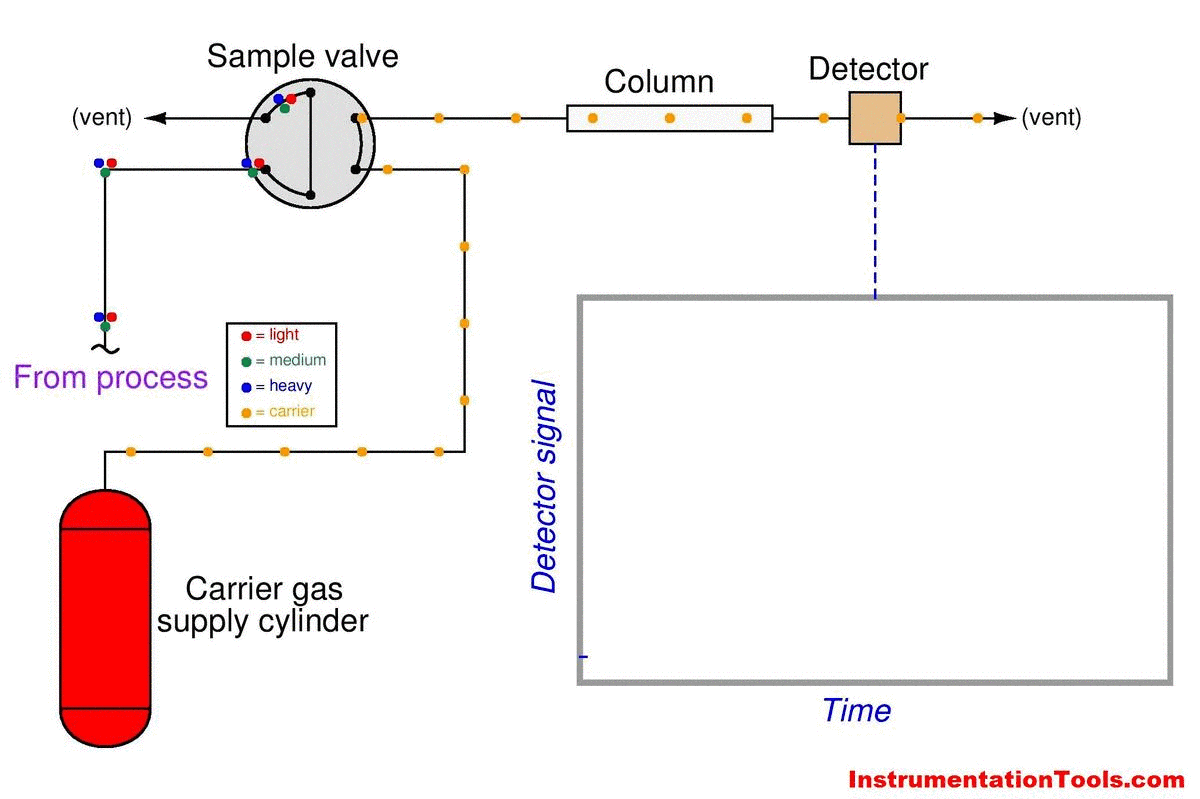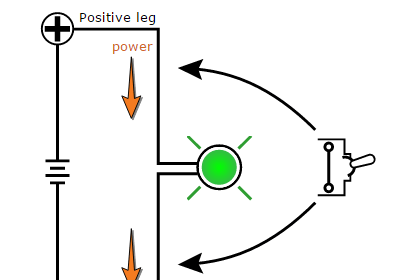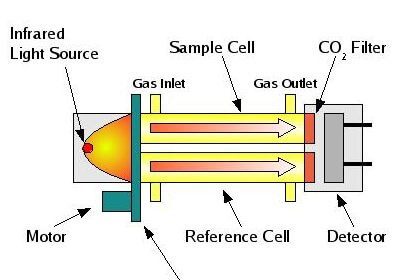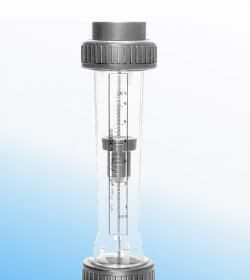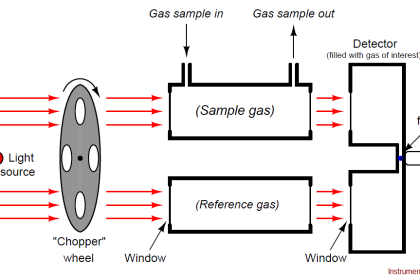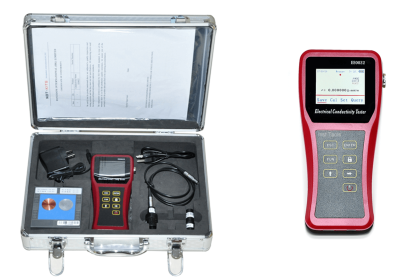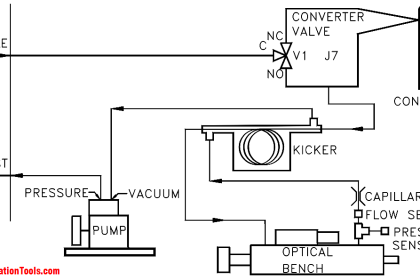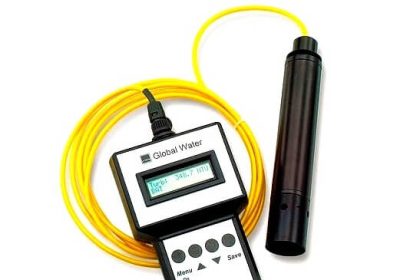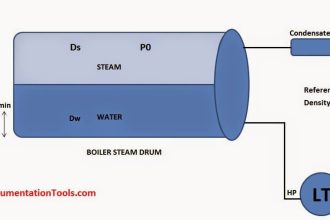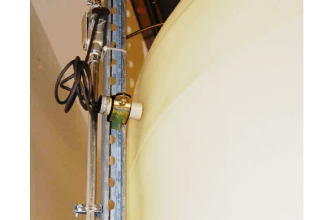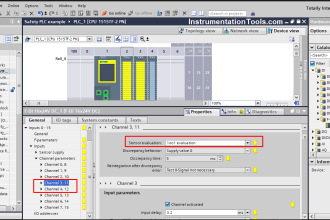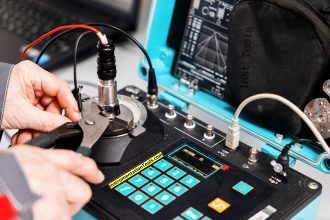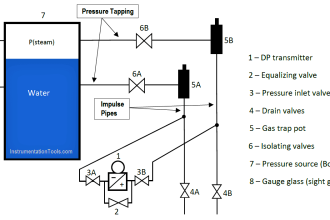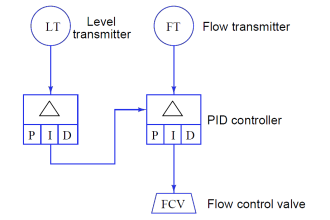Chromatograph Operation :
This animation shows the basic operation of a gas chromatograph, showing the separation of different molecular species in a gas mixture. Each gas type is represented by a different colored dot moving along the tubing.
Carrier gas is represented by orange dots moving constantly through the sample valve and column. Process sample is represented by a cluster of three dots: red (light), green (medium), and blue (heavy) molecules mixed together. These molecules move together at the same rate until they reach the column. There, the light molecules (red) travel fastest, the medium molecules (green) travel slower, and the heavy molecules (blue) travel slowest.
Thus, the differing velocities within the chromatograph column performs the task of separation necessary to identify and measure each chemical component in the mixture. All the while, you can see the chromatogram developing, a peak appearing each time one of the components reaches the detector.
Each chemical component (light, medium, heavy) is thus identified by its place in time when its peak appears on the chromatogram, while the concentration (quantity) of each component is discernible by the area integrated underneath each peak.
